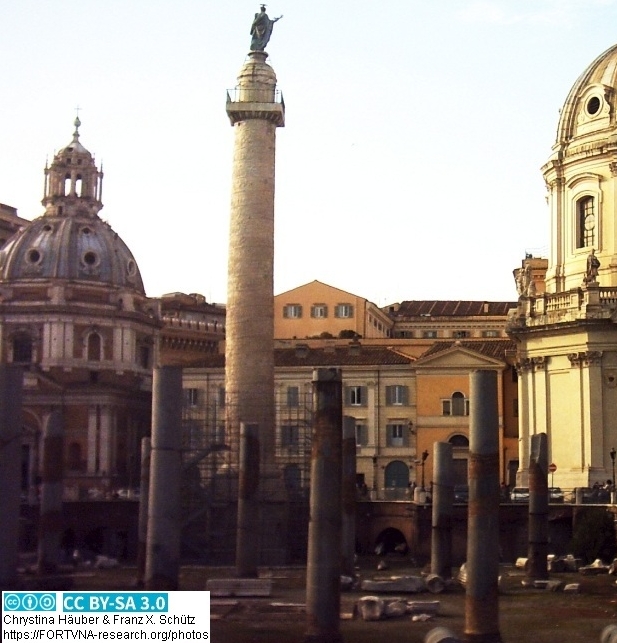


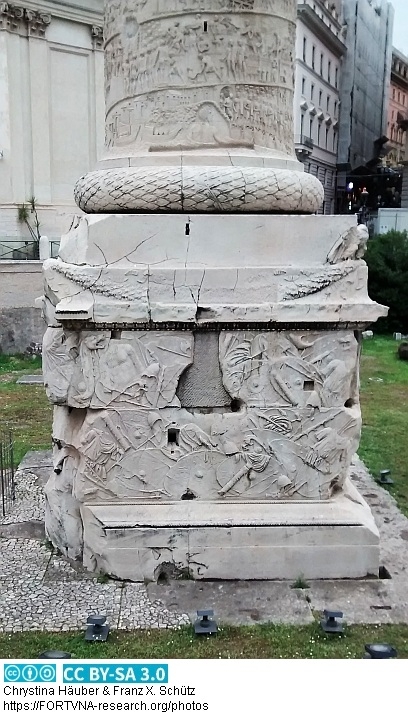
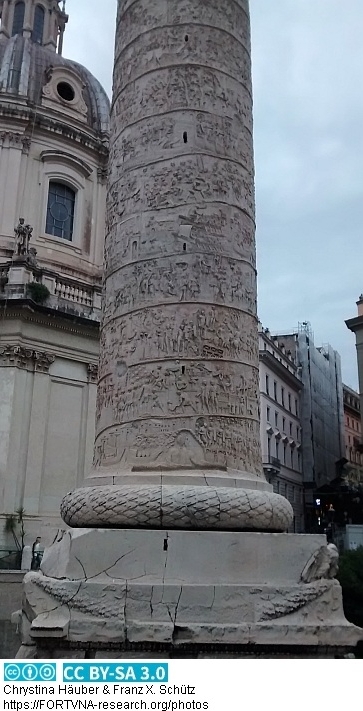
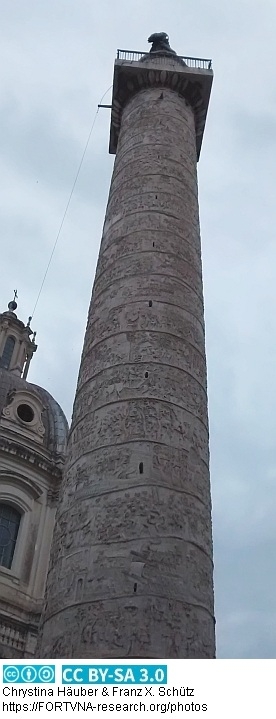
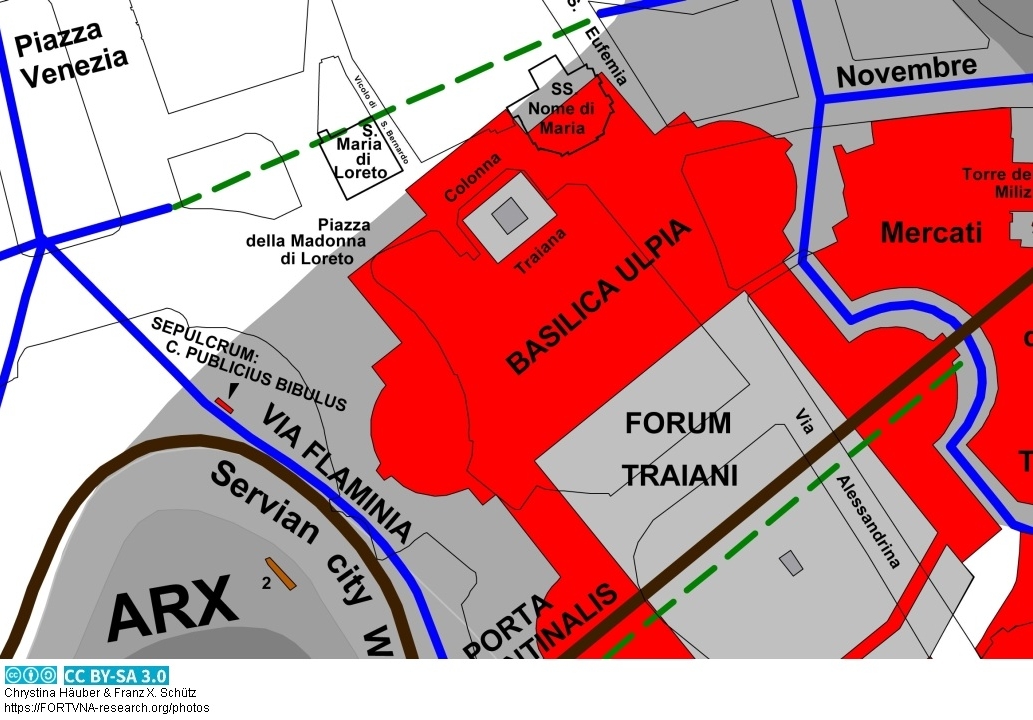
In connection with his research on Trajan's Column, it was first Martin Beckmann ("Planning and Execution of the Frieze of Tajan's Column: the Case of Scene CXII", 2017), who has mentioned the airport Berlin Brandenburg in connection with this ambitious project - which, in its turn, belonged to the enormous building site of the Forum of Trajan. In the meantime it has been realized that this mega-building site, which should result in the Forum of Trajan, had been connected from its very beginning with the likewise huge building-site of the (future) Baths of Trajan, and that both buildings had been planned and begun by Domitian. - To this I will come back below. I, therefore, borrow here Beckmann's (2017) idea to compare Domitian's building projects in Rome with the Flughafen Berlin Brandenburg.
After analysing the obvious planning problems concerning the Frieze of Trajan's Column, Beckmann (2017) convincingly states that such mismanagements of great building-projects, as the one discussed by him, are by no means rare. And because at the time, when he was writing this article, this mega-project was much discussed, Beckmann mentioned as a contemporary example the airport Berlin Brandenburg.
Beckmann (2017, 83 with n. 25) quotes critical voices concerning the management of this huge building site airport Berlin Brandenburg, which I will quote verbatim in the following.
I am mentioning the example of the mismanagement of the airport Berlin Brandenburg here, because, when comparing this airport with the sheer number and size of Domitian's building projects at Rome, it becomes clear that Domitian's management of his building sites was obviously excellent.
Domitian reigned for 15 years, from AD 81-96. The decision to erect the airport Berlin Brandenburg was made in 1996, but the airport could only be opened on 31st October 2020, that is to say, 24 years after first planning it, and after its opening had to be postponed for seven times.
After having analysed the design and execution of the spiral Frieze of Trajan's Column in great detail, Martin Beckmann (2017, 83) concludes that this project had obviously been planned very badly:
"This suggests the lack of comprehensive, detailed planning for the frieze [of Trajan's Column] ... Though the evidence for such a scenario is strong ... it is still difficult for a modern observer to imagine that such a complex task as carving the frieze of Trajan’s Column could be approached without minute planning. But this should not come as a great surprise, since such a situation is hardly unknown in the field of architecture. Even the largest and most complicated projects can be undertaken with incomplete or insufficient planning, sometimes resulting in significant problems. Most recently, planners of the new Berlin Brandenburg airport have been accused of completing only 10% of their work before the start of construction. [with n. 25]".
In his note 25, Beckman writes: "An den ausführenden Bauunternehmen liege die Verzögerung nicht, betonen die beiden großen Interessenverbände der Bauwirtschaft. Stattdessen hätten fehlende Planung und mangelnde Sachkompetenz auf Seiten des Auftraggebers zu diesem Chaos geführt. `Wenn zu Baubeginn von geschätzten 6000 Einzelplänen nur rund 10 Prozent fertig waren, ließ das nur einen Schluss ziehen: Der Bauherr wusste nicht genau, was er haben wollte - außer vielleicht, dass es ein Flughafen sein sollte´, sagt Felix Pakleppa, Hauptgeschäftsführer des Zentralverbandes Deutsches Baugewerbe. ``Frankfurter Allgemeine Zeitung, Wed. 9 Jan. 2013, "Das Aushängeschild Berliner Flughafen wird zum Schandmal´´ [my emphasis]".
On the homepage of the `Flughafen Berlin Brandenburg Willy Brandt´ we find the information that in 1996 was decided to erect this airport and that it was opened on 31st October 2020.
Cf. online at:
<https://corporate.berlin-airport.de/de/unternehmen-presse/historie/flughafen-berlin-brandenburg-willy-brandt.html>. Visited 4th April 2023.
" 2000 – 2004: Planfeststellungsverfahren mit Auslegung der Unterlagen und öffentlichen Anhörungen.
1999: Unterzeichnung der Verträge zur Umsiedlung der Gemeinde Diepensee und der Teilumsiedlung der Gemeinde Selchow.
1997 – 2003: Verhandlungen über die Privatisierung des Bauvorhabens und Vergabeverfahren. Die Privatisierung wird schlussendlich nicht umgesetzt und die Planungsunterlagen gehen an die Flughafengesellschaft über.
1996 – 1999: Planung des Flughafens und Einreichung des Planfeststellungsantrags
1996: Konsensbeschluss der Gesellschafter Berlin, Brandenburg und Bund: Die Gesellschafter verzichten auf den Neubau eines Flughafens für die Region. Stattdessen soll der bereits existierende Flughafen Schönefeld zum Airport Berlin Brandenburg International BBI ausgebaut werden. Die innerstädtischen Flughäfen Tegel und Tempelhof sollen geschlossen werden.
Einfach aufmachen: Am 31. Oktober 2020 ist das Terminal 1 des Flughafens Berlin Brandenburg Willy Brandt (BER) mit der Ankunft der ersten beiden Flugzeuge von easyJet und Lufthansa eröffnet worden ...".
last update: 19.6.2023
Datenschutzerklärung | Impressum